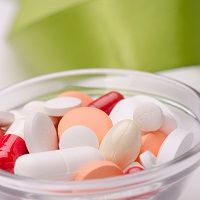Article
Drug Interactions between TAF-Based Regimens and HCV Treatments in Coinfected Patients
Author(s):
Study results show there are minimal drug-drug interactions between tenofovir alafenamide-based antiretroviral regimens for HIV and ledipasvir/sofosbuvir combination treatment for hepatitis C.

“No dose modification is required when co-administering single-tablet regimens containing tenofovir alafenamide to patients with HIV being treated with ledipasvir/sofosbuvir for hepatitis C virus co-infection,” said Joseph Custodio, PhD, Senior Clinical Scientist at Gilead Sciences, during a presentation at IDWeek 2015.
IDWeek is a joint meeting of the Infectious Diseases Society of America (IDSA), the Society for Healthcare Epidemiology of America (SHEA), the HIV Medicine Association (HIVMA), and the Pediatric Infectious Diseases Society (PIDS).
Approximately one-third of individuals infected with HIV are also infected with the hepatitis C virus, with estimates of more than 4 million co-infected individuals worldwide. Many of these patients are treated with the P-glycoprotein (P-gp) inhibitor, ledipasvir. The fixed-dose combination of the anti-HCV treatment ledipasvir-sofosbuvir is known to have significant drug-drug interactions with P-gp inducers, and its concomitant use with P-gp inducers is not recommended. Because the antiretroviral treatment, tenofovir alafenamide (TAF), is known to be a P-gp substrate, the potential for drug-drug interactions with anti-HCV treatments required further study.
In an effort to study the potential for drug-drug interactions, two randomized, multiple-dose, crossover Phase 1 pharmacokinetic studies compared PK parameters following administration of TAF-based regimens [rilpivirine/emtricitabine/tenofovir alefanamide (R/F/TAF) or elvitegravir/cobicistat/ emtricitabine/tenofovir alefanamide (E/C/F/TAF)] given alone or in combination with the fixed-dose combination anti-HCV treatment ledipasvir/sofusbuvir (Harvoni).
Both studies involved healthy volunteers, and both studies compared the treatment regimens when given daily with food for 11 days (Study 1) or 10 days (Study 2). A total of 42 and 30 healthy volunteers completed Study 1 and Study 2, respectively. In Study 1, subjects received R/F/TAF 25 mg/200 mg/24 mg, and in Study 2, subjects received E/C/F/TAF 150 mg/150 mg/200 mg/10 mg.
Plasma concentrations were measured for rilpivirine, elvitegravir, cobicistat, emtricitabine, tenofovir, alafenamide, and its metabolite (tenofovir), ledipasvir, sofosbuvir, and its metabolite, GS-331007. Pharmacokinetic parameters were calculated via noncompartmental analysis. For all of the major analytes, the area under the curve (AUC), peak plasma concentration (Cmax), and Ctau were calculated using linear, mixed-effect modeling. Geometric least squares mean ratio (combination vs. alone) and 90% confidence intervals were calculated for each.
Although tenofovir exposure was increased by co-administration with anti-HCV treatment, the average tenofovir exposure was about 5 times lower with the tenofovir prodrug, tenofovir alafenamide, compared with that achieved with the conventionally used tenofovir disoproxil fumarate formulation. Exposure to both ledipasvir and sofosbuvir was higher, but were within the range of acceptable exposures, as defined during the ledipasvir/sofosbuvir development program.
In both studies, the treatments administered were generally well tolerated. Comparing these exposures with those achieved in Phase 3 trials, these tenofovir exposures were not in the range that would be associated with renal adverse events or bone loss. Data from Phase 2/3 trials have also shown that there is no association between higher cobicistat exposure and the incidence of adverse events or effects on renal function parameters.
Custodio concluded that either of the tenofovir alafenamide-containing antiviral regimens, rilpivirine/emtricitabine/tenofovir alafenamide or elvitegravir/cobicistat/emtricitabine/tenofovir alafenamide, may be co-administered with the anti-HCV regimen, ledipasvir/sofosbuvir without dose modification.





